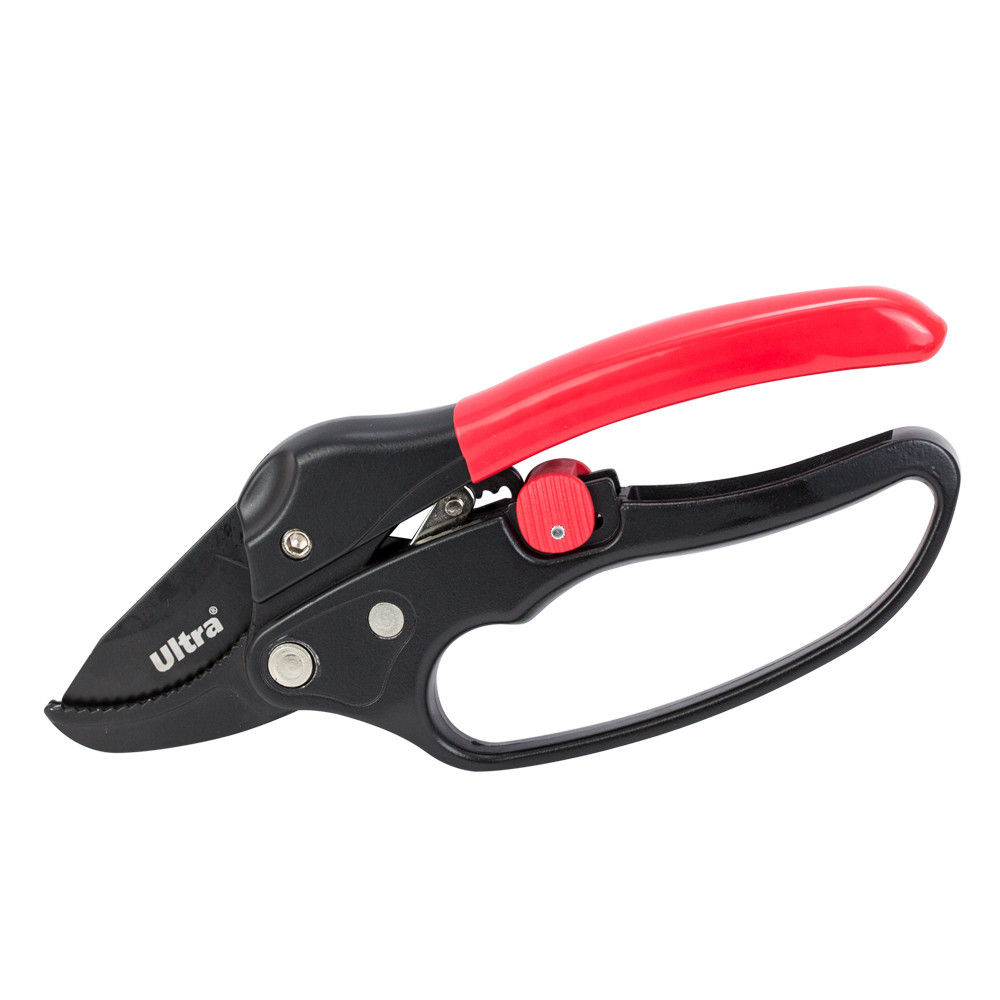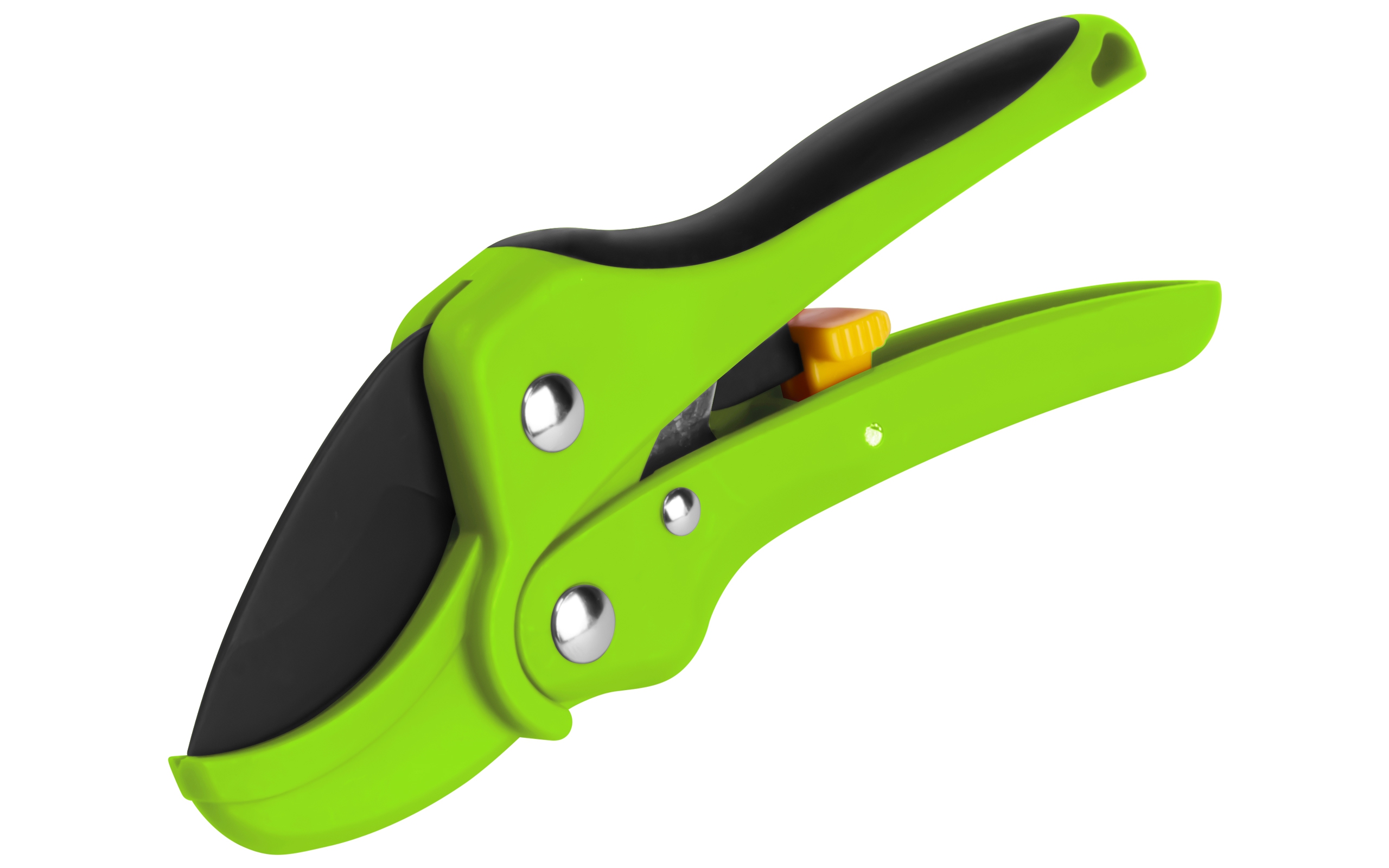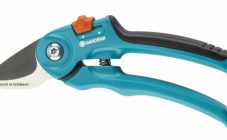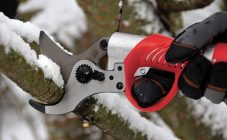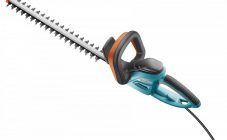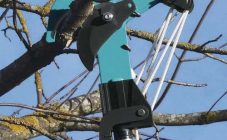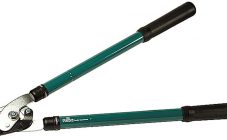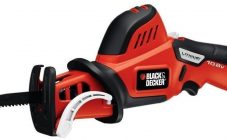Content:
One of the basic principles of proper garden maintenance is pruning trees, bushes, flowers. This procedure involves sanitary pruning (removal of dry, diseased branches, elimination of thickening), as well as decorative haircuts, crown formation, contributes to the rejuvenation of plantings.
High-quality pruning is impossible without the right tool. The most convenient and practical device for performing a garden cut are garden shears - pruners. Due to the popularity and high demand among consumers, the modification of secateurs has constantly evolved, new varieties have appeared, differing in structure and principle of operation.
The operation of the planar versions of the tool is based on the model of the work of conventional scissors. This type of secateurs is used for processing young pagons. For such pruning, much effort is not needed, the cuts are smooth, delicate, the branches are not damaged.
For more serious work: removing dry, large branches forming pruning, contact pruners are used. This type of tool is represented by several well-known types: bypass, with anvil, with a ratchet mechanism.
The last option is a rather interesting device that deserves a more detailed study.
Features of ratchet secateurs
The main difference and feature of this tool is a unique mechanism for cutting branches - a ratchet. Such a system is known as a ratchet, due to the characteristic crackling sound that is emitted during operation. To determine the advantages of this tool, you need to understand what the ratchet mechanism in the pruner is.
The principle of operation of the ratchet is a phased section of the branch.
The gardener squeezes the pruner handles. As soon as one force becomes insufficient for a complete cut and the blades stop, the spring pushes the tool handle back to its original position and the clamping process is repeated. Thus, the effort required to cut a branch is divided into several steps, significantly reducing the cost of effort.
Due to the fact that the blades remain static during the return of the handle to its original position, the cut is smooth, without chipping. In addition, the device itself wears out much less.
Ratchet pruning shears characteristics
The main characteristic of this tool is the ability to easily cope with the work that requires a lot of effort, provided it is performed with a classic pruner.
The ratchet blades are made of high quality titanium or carbon steel. Handles can be plastic, wood fiberglass. Instruments, depending on the model, differ in size, weight and shape. This is a positive trend - the consumer can choose the equipment that is most convenient and meets the necessary criteria.
The ratchet pruner is designed for tough garden work:
- Pruning large and dry branches up to 3 cm thick.
- Crown formation.
- Cutting cuttings.
- Root shortening.
This type of pruner is essential for large orchards and nurseries. But, despite all the advantages of the tool, there are some features that should be studied before purchasing it.
Disadvantages of the Ratchet Attachment:
- It is inconvenient to cut thin young pagons.
- It is better not to cut branches larger than 3 cm in diameter - the instrument may be damaged. For this processing, a lopper is used.
- It takes significantly longer to work than using a conventional pruner.
- The tool is quite expensive, given the complex mechanism and high quality of the material.
To avoid such inconveniences during garden treatments, gardeners recommend using several types of pruners. As a result, each tool has its own work area, saving time and effort, and improving the quality of trimming.
How to choose a quality tool
The choice of a quality secateurs, including those with a ratchet mechanism, is based on the main criteria:
- The quality of the tool.
- Individual matching.
- Compliance with the volume and complexity of the work.
The main rules for choosing the right device:
- The quality of the mechanism and assembly of the tool is assessed. For this, the pruner is checked in motion. When clamping and returning the spring to its original position, there can be no obstacles or friction. The mechanism must be well lubricated and work well.
- The sharpness and quality of the blades are checked. Quality blades are made from solid steel or titanium. Mild steel knives grind down quickly and wrinkle edges. In addition, the blades of the new tool are characterized by absolute smoothness: no bumps, notches, or roughness. For greater durability and efficiency, the knives are treated with a special Teflon coating - it protects the metal from corrosion and makes the cut smoother.
- The quality of knife sharpening is evaluated. New blades must be properly sharpened - the quality of work and the durability of the tool depend on this.
- Tools with strong and comfortable handles are selected. The pruner handles are under heavy stress, so they should be powerful enough, but not very heavy. In addition, handles should be chosen that are comfortable for the hand so that no blisters form. The best option is considered to be handles made of durable plastic or fiberglass with special rubber pads. A ratchet tool must also be equipped with a safety bow.
In addition to the listed criteria, experienced gardeners recommend choosing a pruner, based on individual characteristics. The tool should be comfortable first of all. If from the first try, even upon purchase, the device seemed inconvenient or difficult to operate, then most likely the situation will not change with further use.
Another interesting tip is that it is advisable to pay attention to the colors of the pens. It is better to give preference to bright colors - the instrument has the peculiarity of being lost, so it will be easier to find it.
Rules for working with ratchet pruners
The basic rules for operating a ratchet pruner are to maintain the tool in working order and a correctly defined work area.
Principles of working with a ratchet pruner:
- Thoroughly clean the blades after each use of the tool.
- Regular lubrication of moving parts of the mechanism.
- Regular sharpening of knives.
- Disinfect the blades before using the secateurs.
- Control over the position of the safety catch.
Manufacturers often supplement the instrument with a variety of features and accessories that should be known in advance.
Top Models
Among the variety of manufacturers, brands and models of ratchet pruning shears, it is difficult to navigate even an experienced gardener. Several well-known models stand out for their positive reviews and good quality:
- Pruner Traum. Professional tool. Features a high quality Teflon coated carbon steel rounded blade. The pruner is equipped with a persistent anvil, comfortable handles with rubber covers and a protective arch.
- Wincut pruner. The pruner is Taiwanese production. It stands out for its compactness, small size: weight 250 - g, length - 20 cm. Perfect for beginners. It features sharp self-sharpening blades made of quality Teflon-coated steel. Thanks to the curved, shiki-like shape of the cutting element, a branch with a thickness of 24 mm can be easily cut. The body is made of aluminum, the handles are equipped with thermoplastic rubber and a loop-shaped bow. A nice addition is the fuse, which is activated by locking the secateurs with one hand.
- Pruner Grinda. Powerful, semi-professional pruner. Convenient, lightweight, reliable tool. Designed for pruning branches up to 2 cm in diameter. The blades are made of hardened carbon steel, with anti-corrosion coating. Easy to clean with a brush inserted into the handle. Thanks to the lightweight aluminum body and comfortable rubber pads, the tool is comfortable to operate and work for a long period. A feature of the secateurs is their adaptability to work with both the left and right hand.
- Secateurs Red Star. A high-quality pruner, an important advantage of which is the ability to cut both large branches, about 2.5 cm thick, and thin twigs. The blades are made of chrome-plated carbon steel, the handles are made of magnesium alloy, equipped with a protective hilt and corrugated plastic. Curved anvil with nylon insert. The tool is additionally equipped with an oil-impregnated sponge for cleaning and lubricating the secateurs after work.
- Green apple secateurs. Reinforced pruning shears made in Taiwan. Suitable for cutting branches up to 20 mm thick. Pruning shears weight - 270 g, length - 20 cm. Steel blade, 5.5 cm long, covered with a dirt-repellent substance. The body is made of die-cast aluminum with a thumb guard for comfortable use.
The ratchet pruner is a good helper for both professional and amateur gardeners. In order for the use of the tool to bring maximum benefit, and the work was comfortable and of high quality, you should study the design features and conditions for using this pruner. Which device is the most convenient and effective, each consumer must decide for himself, based on individual characteristics and preferences.
